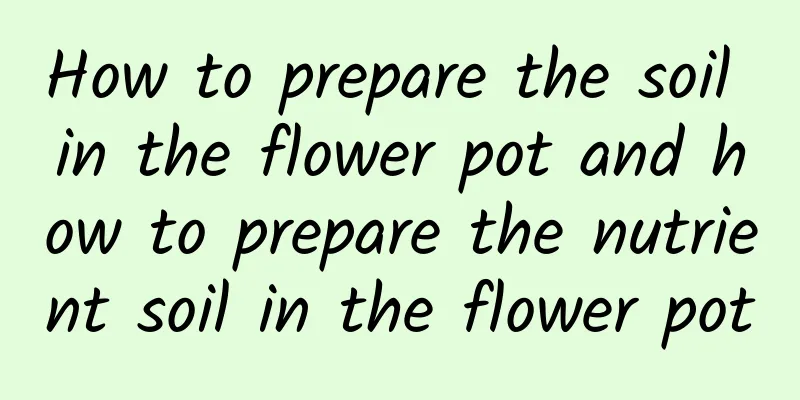Cultivation methods and precautions of Amaryllis

|
Amaryllis is a perennial herb of the Amaryllis family. It has bright flowers and a variety of varieties. It has single or double petals in rich colors. Its flowers generally bloom facing the sun. It is suitable for potted plants or ground planting. Let's talk about the cultivation methods and precautions of Amaryllis. 1. Soil Amaryllis likes fertile, loose and breathable soil. The soil for planting Amaryllis cannot accumulate water. Use one part garden soil, one part leaf mold or peat soil, and one part yellow sand or perlite , mix well for planting. It is better to sprinkle some organic fertilizer at the bottom of the pot as base fertilizer. 2. Sunlight Amaryllis likes sunlight but cannot tolerate high temperatures. It can be given full sunlight in spring, autumn and winter, but needs to be shaded in summer. Long-term lack of sunlight will affect Amaryllis' flowering. 3. Watering When watering amaryllis, water it thoroughly when the soil is dry. Do not allow water to accumulate in the pot soil. In rainy weather, the pot should be raised to prevent water accumulation and root rot. In winter, the soil in the pot of Amaryllis should be kept dry. Do not water it too much, and the soil in the pot should not be kept moist, otherwise the bulbs will be frozen to death due to excessive cold weather. 4. Fertilization When planting or repotting Amaryllis, you need to apply base fertilizer. After planting, you need to maintain it normally, and apply fertilizer mainly composed of phosphorus and potassium fertilizers every 20 days or so to promote the differentiation of flower buds. Do not fertilize Amaryllis when it blooms. After flowering, you need to cut off the pedicels in time to concentrate the nutrients at the roots to help form larger bulbs. Do not fail to fertilize after the amaryllis flowers, but fertilize regularly so that the bulbs can grow larger and have enough nutrients to bloom next year. 5. Temperature Amaryllis cannot tolerate low temperatures. When winter comes, the flower pots should be moved indoors for maintenance and the soil in the pots should be kept dry. It likes warm and humid climate, the suitable temperature for growth is 18-25℃, it does not like extreme heat, and during its winter dormancy period, it requires a cold and humid climate, preferably 10-12℃, and not lower than 5℃. 6. Repotting Amaryllis grows relatively quickly, so it is best to repot it every year. When repotting, the bulbs should be divided into different pots to ensure that the bulbs in each pot are not too dense. 7. Reproduction The main propagation method of Amaryllis is division or seed planting. Amaryllis is easy to bear fruit and artificial pollination is possible during the flowering period. The seeds mature after 2 months and can be sown immediately after harvesting, with a high germination rate. After sowing, place it in a semi-shaded place and keep it moist and at a temperature of 15-18℃. It will germinate in half a month. If the temperature reaches 18-20℃, it will germinate after 10 days. Seed propagation takes 3 to 4 years to bloom. Bulb division propagation is carried out in March and April. The small bulbs around the mother bulb are removed and planted. When planting, the tops of the small bulbs should be exposed above the soil surface. 8. Overwintering One way is to overwinter the bulbs. Dig out the bulbs in early October, cut off the upper stems and leaves, wash the roots and soil, and dry them in the sun or shade. After the bulb epidermis and the cut end are dry, place them in a dry place indoors or store them in sand. 2. For overwintering potted plants, the original pots with soil must be placed in a greenhouse. The soil in the pot must be kept dry. If the soil is too moist and the plant continues to grow, it will disrupt its dormancy and affect normal flowering the following year. The humidity is high in winter, and the flower buds in the bulbs are easy to rot, resulting in no flowers the following year. Plants that overwinter in pots will produce flowers and leaves earlier than plants that overwinter in dry storage. It can overwinter in the open field in areas south of the Yangtze River. Cut off the leaves in late autumn and early winter, and cover the scales with soil or straw. Plants that overwinter in the open field grow vigorously the following year. The flower buds thrive, but are prone to rot in areas with heavy rain and snow and in conditions of poor sunlight and ventilation. That’s it |
<<: How to care for the newly bought peony
>>: How to care for the newly bought yellow rose
Recommend
How to cultivate the succulent Jade Leaf
Succulent Jade Plant Growth Conditions The succul...
How to make snapdragon bloom more
Snapdragon should be fertilized and watered prope...
How to care for newly bought Cymbidium
1. Lighting Cymbidium orchids like light. After y...
How to remedy aloe vera root rot?
Aloe vera has a compact plant shape, thick leaves...
It is now popular to grow "leeks" in flower pots. Learn this method and you can harvest crop after crop!
I heard that growing leeks in flower pots is very...
Cultivation methods and precautions of pine red plum
Farming methods soil The soil requirements of pin...
Grape growth period and fertilizer requirements (fertilization management methods and techniques during grape growth period)
1. Base fertilization Base fertilization is gener...
How to raise Qingli
Watering Compared with other plants, Qingli is a ...
Key points of high-yield cultivation technology of carrot
Carrot is a vegetable with high nutritional value...
Winter wheat sowing time
Winter wheat refers to a variety of wheat that is...
What are the cultivation methods and precautions for four-season orchids?
Four Seasons Orchid Cultivation Method It is rela...
How to take care of the newly bought azalea
1. Avoid changing pots Never repot a newly purcha...
Advantages and disadvantages of Ocean Song Rose
The Song of the Sea rose is a cut rose variety fr...
How to plant sand ginger
1. Planting time Sand ginger is usually sown in s...
Ginseng planting conditions and climate requirements
Ginseng Introduction Ginseng is a plant of the ge...









